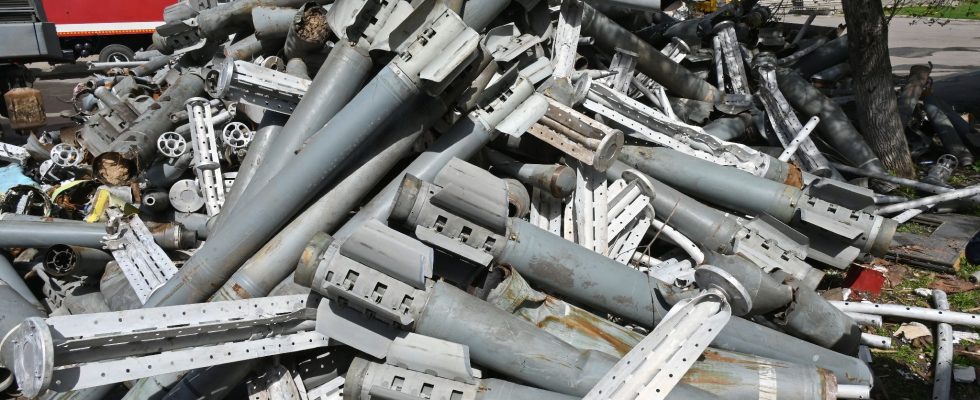The list of types of weapons the Ukrainians are demanding from the United States is long, led by the F-16 fighter jets, for which a green light is pending. But it continues to shrink. President Joe Biden has indeed accepted that cluster munitions will be delivered to kyiv for the first time. Thousands of them will be provided to him within a new military aid program estimated at 800 million dollars.
For months the Ukrainian army has been pushing for Washington to send these weapons with special status. More than a hundred countries have adopted the Oslo Convention of 2008 providing for their prohibition, including France. But this is not the case for the United States, nor for Ukraine, which uses it, nor for Russia. The latter massively fires RBK-500 bombs via its planes, or rockets launched from BM-30 Smertch vehicles.
A cluster munition contains a myriad of munitions dispersed before impact on the target. Several dozen if it is a 155 mm shell and several hundred for certain rockets. Loaded with 644 submunitions, the M26s benefit from GPS guidance and can be fired by Himars rocket launchers, which the United States has provided in large numbers to Kiev. The container separates from the hundreds of charges it contains before reaching the ground and causing explosions on a circular surface approximately 200 meters in diameter.
A choice of reason for American elected officials
“With a shell or a rocket with cluster munitions, we clear much more ground than with their equivalent containing a single charge, explains Léo Péria-Peigné, researcher in armaments and prospective at the French Institute of International Relations (IFRI). The Ukrainians are going to be able to clear Russian fortified positions over wider areas, especially if it’s coordinated battery fire.”
The argument was put forward in March by elected members of Congress to convince the White House to give the green light. “Supplying cluster munitions will allow Ukraine to offset Russia’s quantitative advantage in personnel and shells, and allow it to concentrate the use [des autres armes] against higher value Russian targets, they pointed out. in a letter to Joe Biden. What “reduce the overuse of artillery guns and the strong demand for new deliveries of shells” to the Ukrainians, they added.
The announcement of this delivery was nevertheless immediately criticized by Annalena Baerbock, the Foreign Minister of Germany, one of the signatory countries of the Oslo convention. It is also condemned by humanitarian NGOs. “Cluster munitions used by Russia and Ukraine are causing civilian casualties and will leave behind submunitions that will continue to do so for many years to come,” Human Rights Watch said.
US lawmakers say quality of US cluster munitions ‘limits risk to non-combatants’ – no more than 2.5% failure rate for those delivered to kyiv, according to the Pentagon –, “unlike Russia”. The Red Cross estimates that 10-40% of cluster munition ammunition used in “recent conflicts” failed to explode. Handicap International has established that ultimately 94% of casualties were civilians40% of whom are children.
